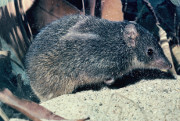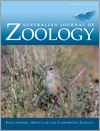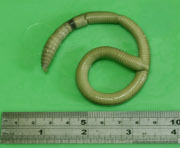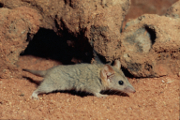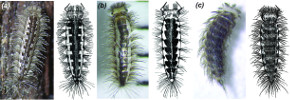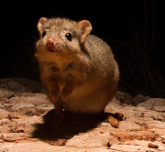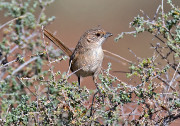Australian Journal of Zoology
Volume 65
Number 4 2017
A major decline of the swamp antechinus was recorded in the eastern Otways (2013–2017) compared to previous records (1975–2007) where high-density populations occurred, particularly after high rainfall. Low rainfall and fragmented habitat resulted in declines, and wildfire extirpation. Recovery under a drying climate is unlikely without targeted management.
Photo by B. Wilson.
The conversion of natural forest to agroforestry plantations and annual cropping systems have reduced native earthworm populations and diversity on Mount Gede, Indonesia. Notoscolex javanica was the only native species to survive this deforestation, while the exotic Ocnerodrilus occidentalis and Pontoscolex corethrurus thrived, becoming the eudominant species.
Photo by Andy Darmawan.
Faecal pellet counts showed that overlap in habitat use by native and introduced mammalian herbivores was generally high, and that resource partitioning was more strongly influenced by evolutionary history than body size. The potential for competition was evident, yet coexistence was facilitated by niche complementarity, including temporal and fine-scale resource partitioning.
Within the dasyurid genus Pseudantechinus, DNA sequences from nuclear and mitochondrial gene loci differentiate most species as reciprocally monophyletic lineages. They are, however, unable to distinguish between individuals identified in museum collections as Pseudantechinus macdonnellensis and Ps. roryi. Ps. roryi is thus considered to be a synonym of Ps. macdonnellensis.
Photo by P. A. Woolley and D. Walsh.
Phryssonotus novaehollandiae was considered to be the only species from this genus in Australia. However, differences in body scale trichomes and results of phylogenetic analysis indicated that there was more than one species. P. novaehollandiae remains, and two new species (P. australis, sp. nov. and P. occidentalis, sp. nov.) are described.
Photo by Cuong Huynh.
Once widespread, the largest population of boodies is now on Barrow Island. This population uses complex warren systems, breeds continuously and exhibits sexual dimorphism. Trapping shows strong fidelity to warrens. Genetic data show isolation by distance, which is more marked in females, and evidence for a substantial evolutionarily effective population size.
Photo by Pat Cullen.
Parapatric populations have a unique evolutionary trajectory that is influenced by their environment. We found that the plant community in a region of parapatry between two subspecies of the thick-billed grasswren (Amytornis modestus) was heterogeneous compared to the subspecies core distributions. This could facilitate divergence with gene flow between these subspecies.
Photo by Geoffrey Jones.
